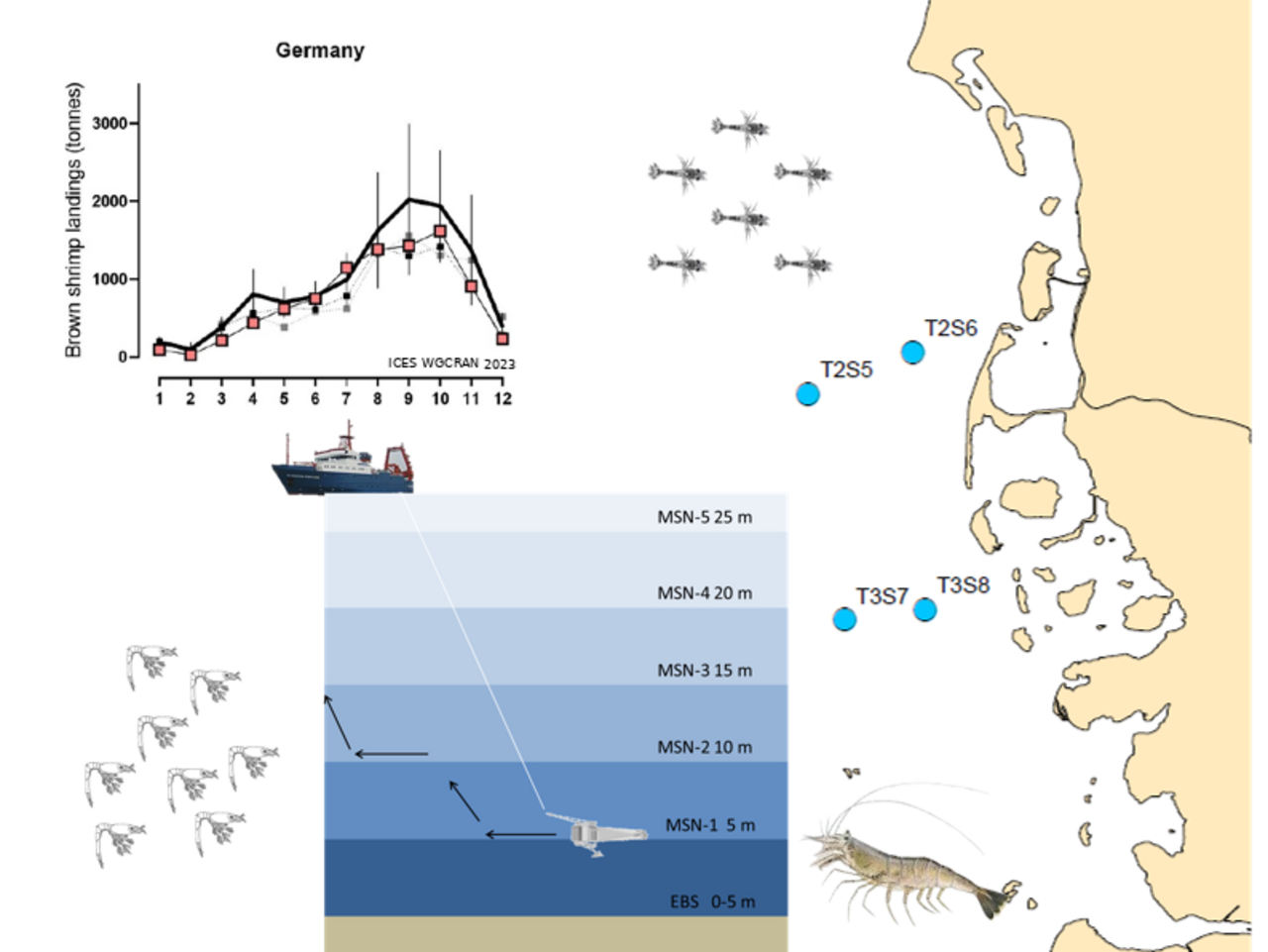Project
Scientific studies on the biology and fisheries of the brown shrimp CRANgon crangon as a basis for an efficient self-MANagement system (CRANMAN II)

Scientific studies on the biology and fisheries of the brown shrimp CRANgon crangon as a basis for an efficient self-MANagement system (follow-up project to CRANMAN, 2018-2022)
The CRANMAN2 project aims to establish and improve the scientific basis for sustainable management of shrimp fisheries in the North Sea.
Background and Objective
Fishing for North Sea shrimp (Crangon crangon) is one of the most important components of German coastal fisheries. However, the North Sea shrimp stock is not subject to internationally coordinated management at the EU level, nor is there operational management at the national level, whether through quotas or effort restrictions (reduction in days at sea). As part of the sustainability certification by the Marine Stewardship Council (MSC), the fishery has committed to self-management.
The CRANMAN2 project aims to further develop the scientific foundations for this management. This includes improving and expanding knowledge about biological parameters and processes that serve as the data basis for modeling stock dynamics. The Thünen Institute of Sea Fisheries is investigating the distribution of spawning biomass in relation to fishing pressure and recruitment processes of early life stages in the German Bight.
In collaboration with project partners (the Institute for Marine Ecosystem and Fisheries Science Hamburg, the Helmholtz Center Hereon Geesthacht, the Alfred Wegener Institute List on Sylt, and the Research and Technology Center Büsum), the collected data will be integrated into drift models. This approach aims to draw conclusions about fluctuating recruitment, which is a crucial aspect of stock modeling.
Target Group
- Political decision-makers and expert committees
- Producer organizations and/or MSC fleets
- Science
Approach
- Sea sampling to investigate the diel distribution of North Sea shrimp larval stages in the water column using vertically resolving plankton nets.
- Analysis of VMS (Vessel Monitoring System) data from shrimp fisheries in German coastal waters, combined with landing and sieve station data.
- Evaluation of historical epibenthos data.
Data and Methods
The data collected at sea on the distribution of larvae in the water column will be used to parameterize a vertical migration model.
Spatial patterns in the distribution of spawning biomass will be identified by linking data such as VMS and landing data from fisheries. These spatial patterns will then be combined with the vertical migration model and a 3D ocean circulation model to provide insights into where the early life stages of North Sea shrimp begin their drift, how they are distributed by prevailing currents, and where they ultimately transition to a benthic lifestyle.
In addition, the analysis of historical epibenthos samples will investigate spatial patterns in the transition from planktonic to benthic life stages of North Sea shrimp. This will also help validate the drift modeling. This knowledge will be used to draw conclusions about recruitment mechanisms.
Our Research Questions
- Where are the key spawning grounds of the North Sea shrimp?
- How are the early, planktonic life stages of the North Sea shrimp vertically distributed in the German Bight?
- How do currents affect larval drift? Do the larvae drift passively, or do they, at a certain life stage, use selective tidal stream transport to reach the nursery areas in the Wadden Sea?
- What influence does drift have on recruitment?
Thünen-Contact

Involved Thünen-Partners
Involved external Thünen-Partners
- Universität Hamburg
(Hamburg, Deutschland) - Alfred Wegener Institut (AWI) - Helmholtz -Zentrum für Polar und Meeresforschung
(Bremerhaven, List (Sylt), Deutschland) -
Helmholtz-Zentrum Hereon (alt: Helmholtz-Zentrum Geesthacht)
(Geesthacht, Deutschland) - Christian-Albrechts-Universität zu Kiel
(Kiel, Deutschland)
Funding Body
-
Lower Saxony Ministry of Food, Agriculture and Consumer Protection
(national, öffentlich)
Duration
3.2024 - 3.2027
More Information
Funding program: EMFAF - Europäischer Meeres-, Fischerei- und Aquakulturfonds
Project status:
ongoing

![[Translate to English:] [Translate to English:]](/media/_processed_/7/1/csm_IMG_7977_large_1defaf5de1.jpg)





